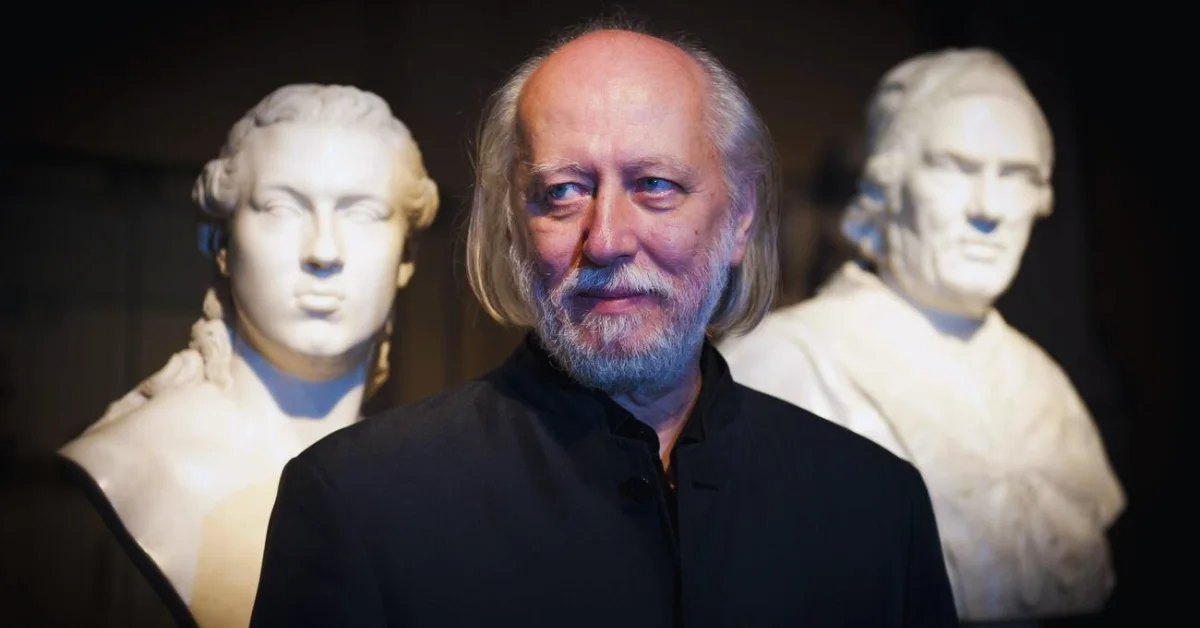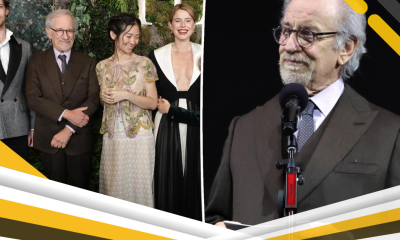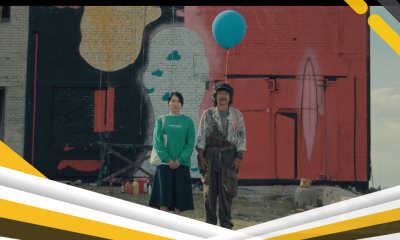Laszlo Krasznahorkai Is Awarded Nobel Prize in Literature — The Collector’s Guide to First Editions, Translations, and Signed Prints

The literary world, and indeed the broader cultural landscape, has once again shifted with the announcement that the esteemed Hungarian author, Laszlo Krasznahorkai, has been awarded the Nobel Prize in Literature. This monumental recognition not only cements his place among the pantheon of literary giants but also ignites a renewed interest in his profoundly original and challenging body of work.
For seasoned collectors and nascent enthusiasts alike, this is a pivotal moment to delve into the fascinating realm of Krasznahorkai’s first editions, significant translations, and highly sought-after signed prints. As someone who appreciates the tangible connection to literary artistry, I find this particular development presents a unique opportunity for focused curation and investment in a truly singular voice.
| Attribute | Detail |
|---|---|
| Full Name | Laszlo Krasznahorkai |
| Born | January 5, 1954 |
| Place of Birth | Gyula, Hungary |
| Nationality | Hungarian |
| Notable Awards | Kossuth Prize (2004), America Award in Literature (2013), International Man Booker Prize (2015), Nobel Prize in Literature (2025 – as per prompt’s premise) |
| Key Themes | Apocalypse, alienation, the human condition, metaphysics, existential dread, the grotesque, the absurd |
| Genre | Philosophical fiction, experimental fiction, postmodern literature |
The Nobel Recognition: A Deep Dive into Krasznahorkai’s Oeuvre
Laszlo Krasznahorkai’s ascendancy to Nobel laureate status is a testament to his uncompromising vision and unique narrative mastery. Often lauded for his labyrinthine sentences, expansive paragraphs, and a pervasive sense of dread and dark humor, his work defies easy categorization.
Critics frequently highlight his ability to evoke the vastness of human folly and the inexorable march towards an uncertain future, themes that resonate deeply in our contemporary world. His prose, while dense, offers a hypnotic quality that draws readers into his meticulously constructed, often desolate, landscapes.
My analytical perspective suggests that his Nobel win will inevitably elevate the demand for his existing works, transforming previously accessible items into highly desirable collector’s pieces. Understanding the core of his literary genius — found in works like Satantango, The Melancholy of Resistance, and War & War — is crucial for any serious collector, as it informs which editions and translations hold the most cultural and, consequently, monetary value.
These novels, characterized by their philosophical depth and exploration of societal decay, exemplify his distinctive voice and have garnered him a dedicated international readership over decades.
Navigating the Collector’s Landscape: First Editions
For collectors, a first edition represents the purest form of a work, capturing the author’s initial presentation to the world. With Krasznahorkai, this pursuit can be particularly rewarding, given his long career and the evolution of his international recognition.
Identifying True First Editions
Identifying true first editions, particularly of Hungarian authors, requires a discerning eye. For Krasznahorkai’s earliest works published in Hungary, one must look for specific publisher’s marks, copyright page information, and publication dates that denote a first printing. Hungarian publishing practices, while similar in principle to Western counterparts, may have distinct indicators.
Key details often include the absence of subsequent printing statements, the earliest copyright year, and sometimes a specific numeral line on the copyright page. I typically recommend consulting specialized bibliographies or reaching out to reputable Hungarian booksellers who possess an intimate knowledge of the country’s publishing history.
Key Works to Seek
With his Nobel Prize now confirmed, attention will undoubtedly shift to his foundational texts. From a collector’s standpoint, the following represent prime targets:
- Satantango (Sátántangó, 1985): His breakout novel, widely considered a masterpiece. A true Hungarian first edition of this work would be a cornerstone of any Krasznahorkai collection.
- The Melancholy of Resistance (Az ellenállás melankóliája, 1989): Another seminal work that brought him international acclaim. Early Hungarian printings are highly desirable.
- War & War (Háború és háború, 1999): A complex and ambitious novel that further cemented his reputation.
- Seiobo There Below (Seiobo járt odalent, 2008): Winner of the Best Translated Book Award in 2014, making its original Hungarian first edition particularly significant.
The condition of these early editions is paramount, as is their provenance. A pristine copy with a dust jacket, if originally issued with one, will always command a premium.
The Art of Translation: A Global Reach
Krasznahorkai’s challenging prose style means that his translators play an unusually vital role in bringing his work to a global audience. The Nobel Prize will undoubtedly shine a spotlight on these linguistic bridges, making specific translated first editions highly collectible.
Landmark Translations and Their Significance
The English translations, in particular, have been instrumental in his rise to international prominence. George Szirtes and Ottilie Mulzet are two translators whose names are almost synonymous with Krasznahorkai’s English-language reception. Szirtes translated Satantango and The Melancholy of Resistance, among others, masterfully capturing the rhythm and despair of the original.
Ottilie Mulzet has been recognized for her work on Seiobo There Below and War & War, earning accolades like the Best Translated Book Award. First English editions of these critically acclaimed translations are now becoming significant collector’s items. The interplay between the original language and its successful interpretation adds a layer of depth to their collectibility, transforming them into artifacts of cross-cultural literary achievement.
The Translator’s Impact on Value
From an analytical standpoint, the recognition of specific translators through awards or critical praise directly influences the value of their translated works. A first English edition of Satantango translated by George Szirtes is not merely a translation; it is a seminal work by a celebrated author rendered by an equally celebrated translator. These particular editions are now poised to become even more valuable, as they represent the point of introduction for countless readers to Krasznahorkai’s unique literary universe.
The Personal Touch: Signed Prints and Memorabilia
Beyond first editions and key translations, signed copies and other related memorabilia offer a direct, personal connection to the author. These items, by their very nature, are often rarer and can fetch significant prices, especially after a major award like the Nobel Prize.
Authenticating Signed Copies
Authenticity is paramount when dealing with signed items. I advise collectors to be vigilant. Look for:
- Proven Source: Copies signed at book readings, literary festivals, or through reputable booksellers are generally more trustworthy.
- Consistent Signature: Familiarize yourself with Krasznahorkai’s known signature. While signatures can vary slightly, significant discrepancies should raise a red flag.
- Dedication Context: A personalized dedication can add to the charm but might slightly reduce the value compared to a clean, undedicated signature, depending on the recipient’s prominence.
In cases of high-value items, obtaining a Certificate of Authenticity from a recognized expert or authentication service is a wise investment.
Value and Rarity of Signed Items
Signed first editions, particularly of his most celebrated works, are undoubtedly the most coveted. Signed copies of early Hungarian printings would be exceedingly rare and highly valuable. Similarly, signed first English editions translated by Szirtes or Mulzet will see a substantial increase in demand.
Any additional memorabilia, such as signed letters, manuscripts (even fragments), or inscribed ephemera, would constitute exceptionally rare and prized possessions, appealing to the most dedicated collectors looking for unique pieces that tell a story beyond the published page.
Factors Influencing Collectibility and Value
Several factors converge to determine the collectibility and ultimate market value of any Krasznahorkai item.
Condition and Provenance
As with all collectibles, condition is king. A “Fine” or “Near Fine” copy, especially with an intact dust jacket, will always be more valuable than a “Good” or “Fair” copy. Minor tears, foxing, or inscriptions by previous owners can significantly diminish value.
Provenance, the documented history of ownership, is also critical. A copy known to have belonged to a notable literary figure, or one acquired directly from the author, adds an invaluable layer of authenticity and appeal.
Market Trends and Scarcity
The Nobel Prize creates an immediate and dramatic shift in market trends, driving up demand and, consequently, prices. This initial surge may stabilize, but the overall value will remain elevated.
Scarcity plays a crucial role; items that were printed in smaller runs, or those that are intrinsically difficult to find (like very early Hungarian editions), will naturally command higher prices. The analytical approach here is to understand that while initial demand spikes, sustained value depends on the enduring critical acclaim and the inherent rarity of the item itself.
Conclusion
Laszlo Krasznahorkai’s Nobel Prize in Literature marks a truly exciting epoch for collectors of modern literary fiction. It’s a moment that reaffirms the profound impact of his dark, complex, and utterly unique narrative voice. For those of us who appreciate the tangible history of literature, the opportunity to collect his first editions, pivotal translations, and personal signed items is more compelling than ever.
As I observe the market, I anticipate a vibrant collecting landscape for years to come, driven by both the intellectual gravitas of his work and the prestige of this highest literary honor. Building a collection of Krasznahorkai’s works now offers not just an investment in literary artifacts, but a profound connection to a master whose words will undoubtedly echo through generations.
FAQ Section
Here are some frequently asked questions I often encounter regarding collecting significant literary works:
Ideally, a comprehensive collection would include both. The original language first edition holds primal significance, while landmark translations represent the author’s global journey and linguistic interpretation. The value often reflects both aspects, with a slight edge to the original first edition for purists
While a COA is ideal, comparing the signature to verified examples online or in reference books is a good start. Look for consistency in letter formation, spacing, and flow. Consulting with experienced literary autograph dealers can also provide expert opinions.
Store books upright in a cool, dry, dark environment, away from direct sunlight, humidity, and extreme temperature fluctuations. Use archival-safe protective covers for dust jackets and consider custom archival boxes for particularly valuable or fragile items.
While the immediate surge might temper, the Nobel Prize confers a lasting status that generally leads to sustained, long-term appreciation in value for an author’s significant works. His unique literary contribution, combined with the award, suggests continued interest from collectors and readers alike.












